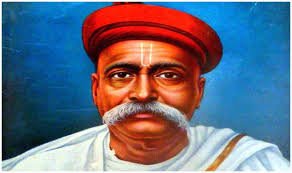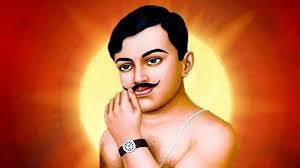CONTENTS
- India Climate Energy Dashboard (ICED) 3.0
- Bal Gangadhar Tilak
- Chandra Shekhar Azad
India Climate Energy Dashboard (ICED) 3.0
Focus: GS II: Government Policies and Interventions
Why in News?
NITI Aayog recently launched India Climate Energy Dashboard (ICED) 3.0.
About India Climate Energy Dashboard (ICED) 3.0
The India Climate Energy Dashboard (ICED) 3.0 is a comprehensive platform designed by NITI Aayog in collaboration with the Vasudha Foundation, a leading energy and climate think-tank. This one-stop portal provides near real-time data on the energy sector, climate, and related economic datasets, sourced from government publications.
Key Features:
- User-Friendly Platform: ICED 3.0 offers a user-friendly interface, allowing users to access and analyze datasets through an analytical engine effortlessly.
- Insights and Understanding: The dashboard serves as a valuable tool for gaining insights and enhancing understanding about the energy and climate sectors. It aids in identifying key challenges and monitoring India’s clean energy transition journey.
- Vast Data Repository: With over 500 parameters, more than 2000 infographics, and numerous interactive visualizations, ICED 3.0 provides a holistic understanding of India’s energy sector.
- Beyond Energy and Climate: In addition to energy and climate-related information, the platform also offers data on the economy and demography, enabling comparative studies and combined analyses with energy and climate issues.
Bal Gangadhar Tilak
Focus: GS I- Modern History
Why in News?
The Prime Minister has paid tribute to the great Lokmanya Tilak on his Jayanti.

About Bal Gangadhar Tilak:
- Bal Gangadhar Tilak, commonly known as Lokamanya Tilak was a leader of the Indian independence movement and belonged to the extremist faction.
- He was also called the ‘Father of Indian Unrest’.
- Born as Keshav Gangadhar Tilak in 1856 in Ratnagiri, modern-day Maharashtra.
Ideology:
- He was a devout Hindu and used Hindu scriptures to rouse people to fight oppression.
- Stressed on the need for self-rule and believed that without self-rule or swarajya, no progress was possible.
- Slogan: “Swaraj is my birth right and I shall have it!”
- Emphasised the importance of a cultural and religious revival to go with the political movements.
- Popularised the Ganesh Chaturthi festival in the Maharashtra region.
- Propounded the celebration of Shiv Jayanti on the birth anniversary of the monarch Chhatrapati Shivaji.
Bal Gangadhar Tilak’s Political Life
- Tilak joined the Congress in 1890.
- He was opposed to moderate ways and views and had a more radical and aggressive stance against British rule.
- He was part of the extremist faction of the INC and was a proponent of boycott and Swadeshi movements.
- He was sentenced to 18 months imprisonment on charges of “incitement to murder”.
- He had written that killers of oppressors could not be blamed, quoting the Bhagavad Gita. After this, two British officials were killed by two Indians in retaliation to the ‘tyrannical’ measures taken by the government during the bubonic plague episode in Bombay.
- Along with Bipin Chandra Pal and Lala Lajpat Rai, he was called the ‘Lal-Bal-Pal’ trio of extremist leaders.
- He was tried for sedition several times. He spent 6 years in Mandalay prison from 1908 to 1914 for writing articles defending Prafulla Chaki and Khudiram Bose. They were revolutionaries who had killed two English women, throwing bomb into the carriage carrying the women. Chaki and Bose had mistakenly assumed that Magistrate Douglas Kingsford was in it.
- Tilak re-joined the INC in 1916, after having split earlier.
- He was one of the founders of the All India Home Rule League, along with Annie Besant and G S Khaparde.
- He called for people to be proud of their heritage. He was against the blatant westernisation of society.
- He transformed the simple Ganesh Puja performed at home into a social and public Ganesh festival.
- He used the Ganesh Chaturthi and Shiv Jayanti (birth anniversary of Shivaji) festivals to create unity and a national spirit among the people. Unfortunately, this move alienated non-Hindus from him.
Newspapers: Weeklies Kesari (Marathi) and Mahratta (English)
Books: Gita Rhasya and Arctic Home of the Vedas.
Death: He died on 1st August 1920.
Chandra Shekhar Azad
Focus: GS I- Modern History
Why in News?
On 23rd July, India paid tribute to the freedom fighter Chandra Shekhar Azad on his birth anniversary.

About Chandra Shekhar Azad:
- Birth: 23rd July 1906
- Place: Alirajpur district of Madhya Pradesh.
- Early Life: Chandra Shekhar, then a 15-year-old student, joined a Non-Cooperation Movement in December 1921. As a result, he was arrested.
- Death: He died at Azad Park in Allahabad on 27th February 1931.
- On being presented before a magistrate, he gave his name as “Azad” (The Free), his father’s name as “Swatantrata” (Independence) and his residence as “Jail” .Therefore, he came to be known as Chandra Shekhar Azad.
Contribution to Freedom Movement:
Hindustan Republican Association (HRA)
- After the suspension of the non-cooperation movement in 1922 by Gandhi, Azad joined Hindustan Republican Association (HRA).
- HRA was a revolutionary organization of India established in 1924 in East Bengal by Sachindra Nath Sanyal, Narendra Mohan Sen and Pratul Ganguly as an offshoot of Anushilan Samiti.
- Members: Bhagat Singh, Chandra Shekhar Azad, Sukhdev, Ram Prasad Bismil, Roshan Singh, Ashfaqulla Khan, Rajendra Lahiri.
Kakori Conspiracy
- Most of the fund collection for revolutionary activities was done through robberies of government property.
- In line with the same, Kakori Train Robbery near Kakori, Lucknow was done in 1925 by HRA.
- The plan was executed by Chandra Shekhar Azad, Ram Prasad Bismil, Ashfaqulla Khan, Rajendra Lahiri, and Manmathnath Gupta.
Hindustan Socialist Republican Association
- HRA was later reorganised as the Hindustan Socialist Republican Army (HSRA).
- It was established in 1928 at Feroz Shah Kotla in New Delhi by Chandra Shekhar Azad, Ashfaqulla Khan, Bhagat Singh, Sukhdev Thapar and Jogesh Chandra Chatterjee.
- HSRA planned the shooting of J. P. Saunders, a British Policeman at Lahore in 1928 to avenge the killing of Lala Lajpat Rai.



